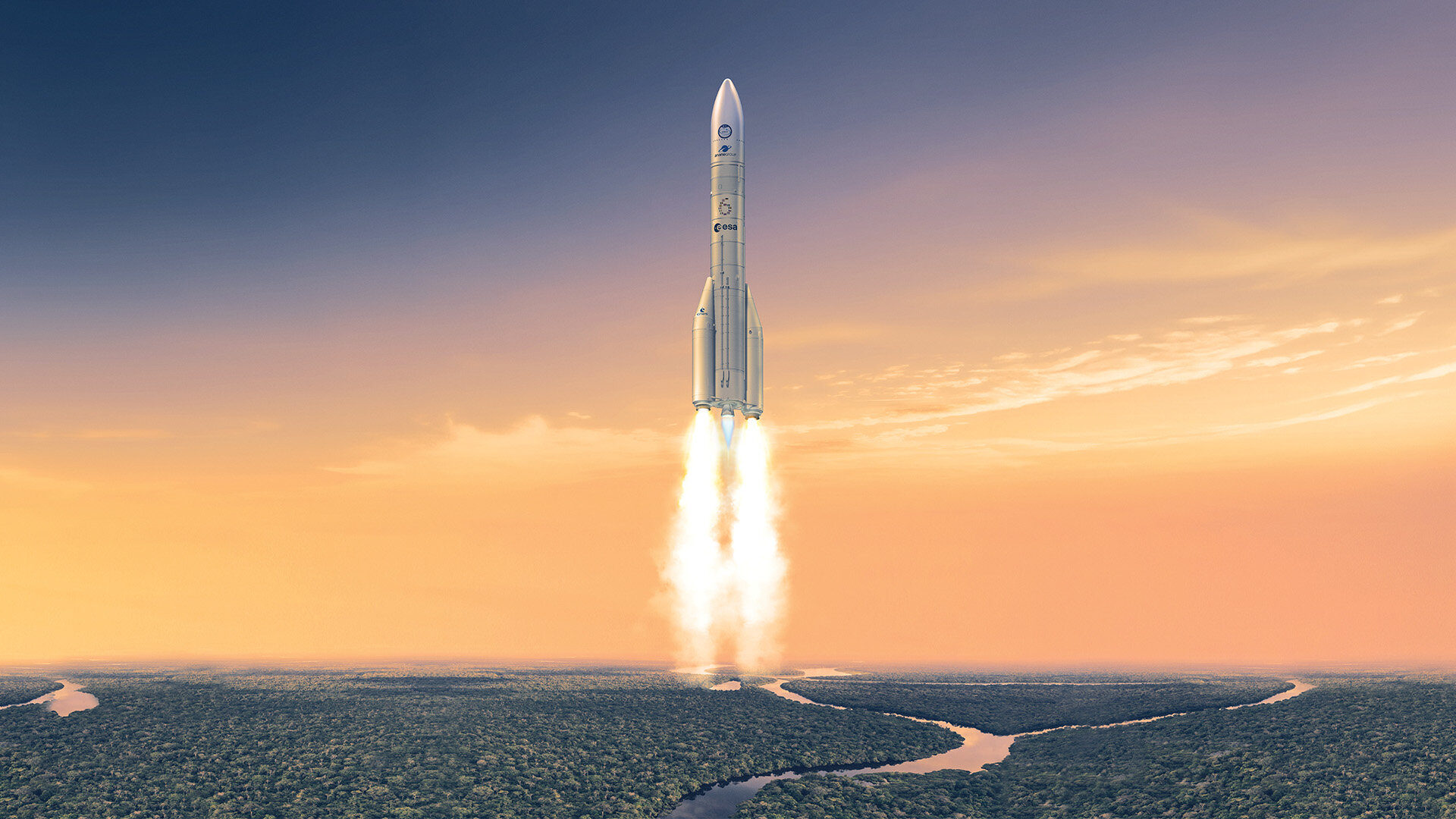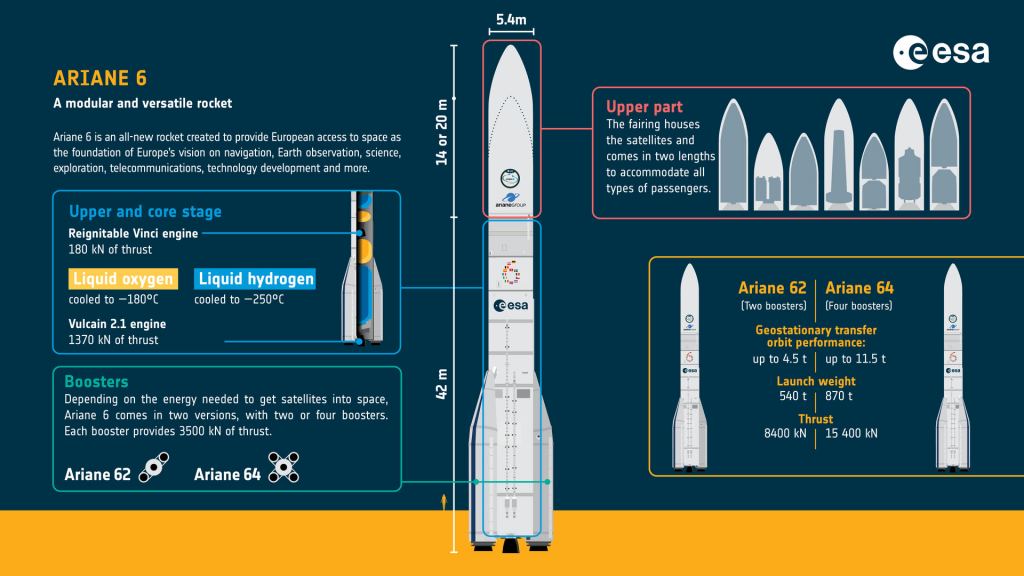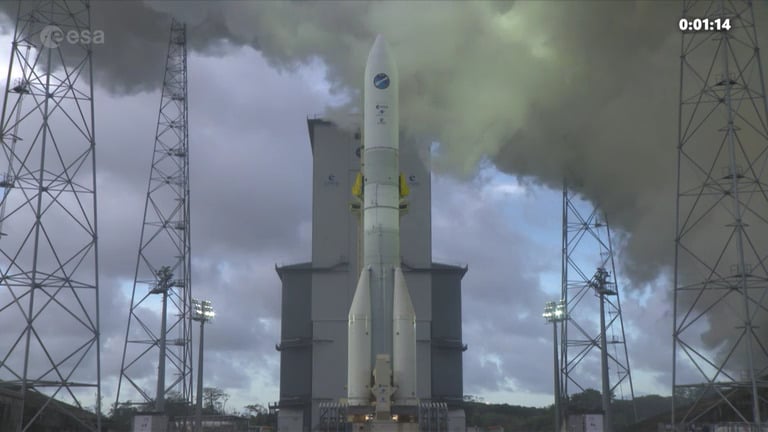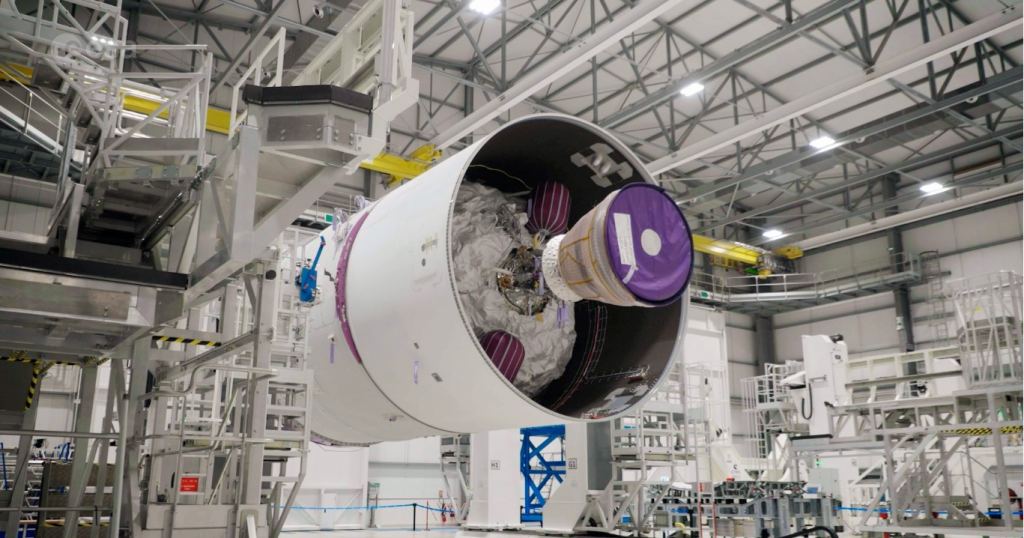The European Space Agency has retired its Ariane 5 rocket, and all eyes are on its next generation, Ariane 6. The rocket's pieces have been arriving at the Kourou facility in French Guiana and are now assembled. ESA has now announced they'll attempt a test launch on July 9th and hope to complete a second flight before the end of 2024. This new heavy-life rocket has a re-ignitable upper stage, allowing it to launch multiple payloads into different orbits.
"Ariane 6 marks a new era of autonomous, versatile European space travel," said ESA Director General Josef Aschbacher, who announced the launch data at the Innovation and Leadership in Aerospace (ILA) Berlin Air Show on June 5, 2024. "This powerful rocket is the culmination of many years of dedication and ingenuity from thousands across Europe and, as it launches, it will re-establish Europe's independent access to space. … I would like to thank the teams on the ground for their tireless hard work, teamwork and dedication in this last stretch of the inaugural launch campaign. Ariane 6 is Europe's rocket for the needs of today, adaptable to our future ambitions."
Ariane 6 has been in the works since the early 2010s to be a replacement the workhorse Ariane 5, which is no longer in production. Ariane 5's first successful launch was in 1998, and since then has sent 109 spacecraft on their way, including the first ATV Jules Verne to the International Space Station and the James Webb Space Telescope to the second LaGrange point 1.5 million km (1 million miles) from Earth.
Ariane 6 is an expendable launch vehicle – not reusable like SpaceX's rockets -- that comes in two versions, with a modular design that can be customized: the rocket can use either two or four P120C strap-on boosters, depending on mission requirements. With the various designs, it can put a 4,500 kg payload into a geostationary transfer orbit or 10,300kg into low Earth orbit using the two boosters, and with four side boosters, it can launch 11,500 kg into a geostationary transfer orbit and 20,600kg into low Earth orbit. The re-ignitable upper stage allows for multiple satellites to launch on a single flight.
Ariane 6 was developed at a cost of just under 4 billion euros ($3.9 billion) and was originally planned for its first launch in July 2020. However, the project has been hampered by several delays, including work-related issues during the Covid-19 pandemic.
The rocket has undergone several tests in the past few years, and in November of 2023, a full fueled Ariane 6 was tested on the launchpad, firing its engines for several minutes, simulating a flight to space.
"The announcement of the scheduled date for Ariane 6's first flight puts us on the home stretch of the launch campaign and we are fully engaged in completing the very last steps," said Martin Sion, CEO of ArianeGroup, the prime contractor of the Arian 6. "This flight will mark the culmination of years of development and testing by the teams at ArianeGroup and its partners across Europe. It will pave the way for commercial operations and a significant ramp-up over the next two years. Ariane 6 is a powerful, versatile and scalable launcher that will ensure Europe's autonomous access to space."
At the Spaceport in French Guiana, various payloads have been integrated on Ariane 6’s payload carrier. One major milestone must be met before launch: a full wet dress rehearsal, which is having a fully fueled vehicle going through all the steps of a countdown, but not the actual ignition of the rocket engines. Once this activity has been completed, the Ariane 6 Task Force will provide an update, confirming the date for the inaugural flight.
 Universe Today
Universe Today



